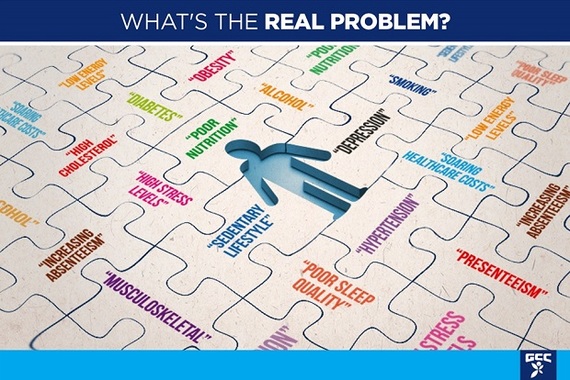If you've spent the last hour working through your emails before reading this, then your large muscle groups are already deflating, your metabolism has slowed, and your biological switch has flicked to the 'standby' position.
This isn't some horrific process of atrophy -- it's the result of the normal working day, when the average employee will only take around 3,000 steps. That translates to 24 minutes of physical activity in a 24 hour period, or in other words, 23 hours and 36 minutes of the day spent doing nothing. This problem is real right now, yet it's astounding that so few people have managed to connect this to the chronic lifestyle diseases crippling the world's workforce.
The solution is scientifically proven, and yet it's simple; a 2013 paper from Harvard Medical School showed that exercise stimulates the brain regions involved in memory function, releasing a protein called brain-derived neurotrophic factor (BDNF). The results are improved cognition, memory function and problem solving -- all the faculties which are the lifeblood of every competitive business, but which are currently deeply buried under apathy and inactivity.
Today, the typical employee's lifestyle has radically changed from what it was a generation ago, and the rise in time saving -- or time wasting -- technology means human capital is physically and mentally in modes that are unsustainable.
Their chronically connected state keeps the amygdala -- the part of the brain responsible for the body's fight or flight mechanism -- on high alert. This manifests itself in all kinds of ways: short panting breaths that lack oxygen, and mild stress that can eventually become permanent. In essence, the brain of the employee who sits and stares at a screen for too long starts to dim to a fraction of its true potential.
The good news is that the mere act of getting up out of the chair is all it takes to break the cycle. Small, incidental changes -- taking the stairs, conducting walking meetings, or hopping off the bus one stop earlier -- can all counter the cognitive and biological slowdown provoked by sedentary habits.
After GCC 2014, the Foundation for Chronic Disease Prevention conducted a global study of our participants and found that 63 percent of employees experienced a decrease in their stress levels either at home or at work. That's 63 percent of people whose seemingly small steps towards a more active lifestyle resulted in positive change.
When individual employees are active, a chain reaction of positive business outcomes emerge inside an organization. The people who are moving start to take an interest in what they're putting in their bodies, paying more attention to how much they eat and drink. They sleep better and deal with stress and pressure more effectively. They arrive each day ready to perform, and this is transformative for a business's culture.
Our bodies and minds are engineered to move. We are hard wired to be our most energetic, creative, productive and resilient selves when we're physical, so if you've ever wanted a workforce that could be described by any of the words above, then make sure you get your people moving.
